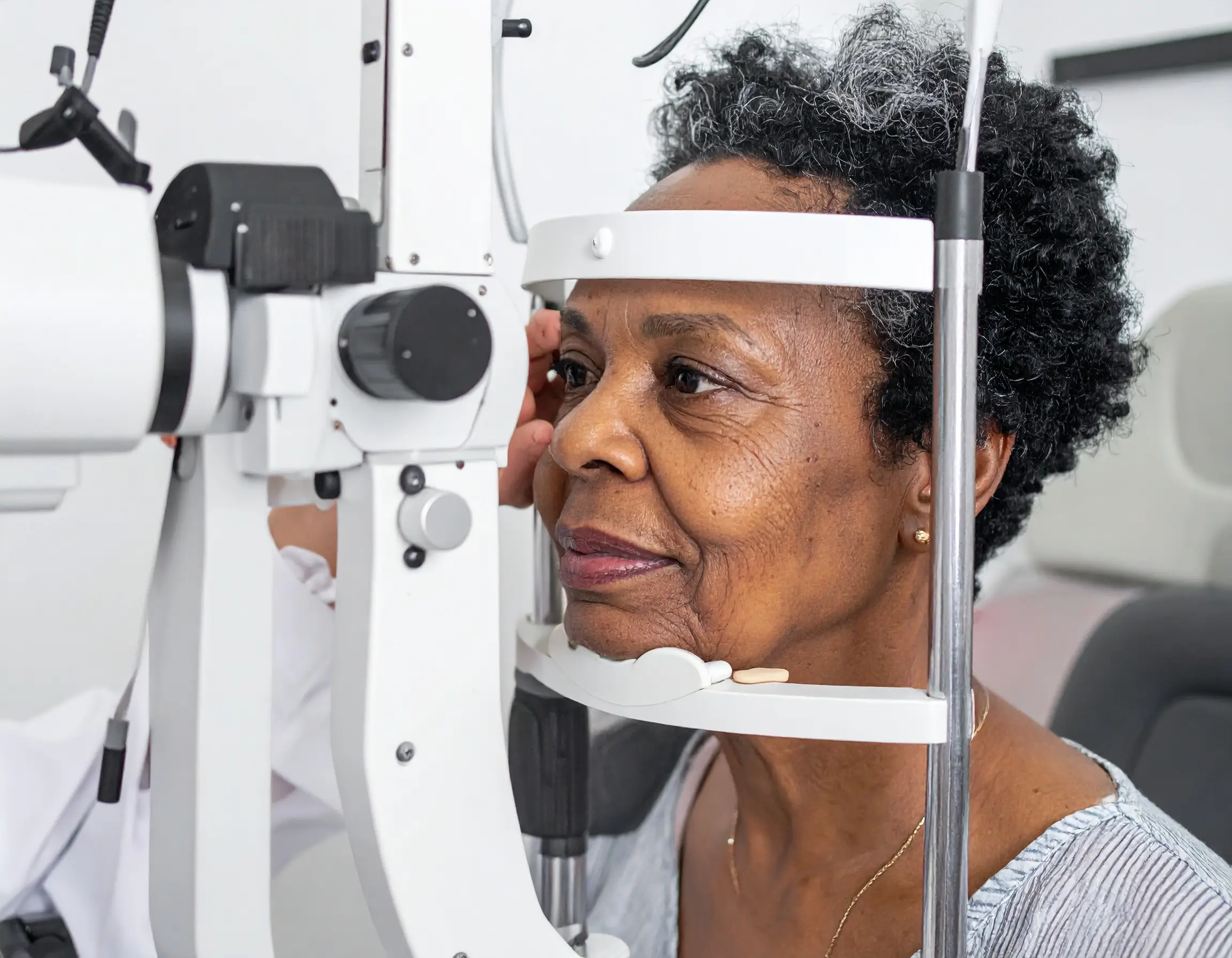Many Ontario residents wonder if the provincial health plan (OHIP) will help pay for prescription eyeglasses or contact lenses. Vision care can be costly, and it’s important to know what expenses are covered by government health insurance. The short answer is that OHIP generally does not cover the cost of prescription eyewear like glasses or contact lenses.
However, OHIP does cover certain eye care services (mainly eye exams) for specific age groups and medical conditions. In this article, we’ll break down what OHIP covers (and doesn’t cover) for eye care, and explore other options to help you afford the eyewear you need.
Understanding OHIP’s Vision Coverage in Ontario
OHIP (Ontario Health Insurance Plan) is designed to cover essential medical services, including some vision care, for residents with a valid health card. When it comes to eye care, OHIP coverage is limited to eye examinations for certain groups of people and certain medically necessary conditions.
Purchases of prescription eyewear (glasses or contact lenses) are not considered insured services under OHIP. In other words, OHIP helps with the cost of checking your eyes, but not with the cost of the glasses or contacts you might need afterwards.
A senior couple consults with an optician about new eyeglasses. Many Ontario seniors wonder if OHIP will help cover the cost of their prescription eyewear. In fact, OHIP covers routine eye exams for seniors but does not cover the purchase of eyeglasses.
To clarify OHIP’s vision coverage, here’s a breakdown by age group:
- Children and Youth (0 – 19 years): OHIP covers one major eye exam every 12 months for Ontarians 19 or younger, as well as any required minor checks in between. This means kids and teens can get yearly eye check-ups at no cost. However, OHIP does not cover the cost of prescription glasses or contact lenses for children. If a child needs eyeglasses, the family is responsible for purchasing them (though there are separate programs to help – more on that later).
- Adults (20 – 64 years): For most adults aged 20 to 64, OHIP does not cover routine eye examinations or eyewear. The only exception is if you have a specific medical condition affecting your eyes; in that case, OHIP will cover eye exams needed to monitor or treat that condition (for example, diabetes, glaucoma, cataracts, or retinal disease). If you’re in this adult age range and don’t have an eligible condition, you’ll need to pay for your eye exams out-of-pocket or via private insurance, and glasses/contact lenses are not paid for by OHIP.
- Seniors (65 years and older): Ontario seniors aged 65+ are eligible for OHIP-covered routine eye exams. As of 2025, OHIP covers one comprehensive eye exam for seniors every 18 months (plus up to two minor follow-up assessments in that period). If a senior has a diagnosed eye condition (like cataracts or macular degeneration), additional exams or specialist visits may also be covered by OHIP. Importantly, even for seniors, OHIP does not cover the cost of prescription eyeglasses or reading glasses – those expenses must be paid out-of-pocket or through insurance. In practical terms, a senior can get regular eye check-ups with OHIP, but still needs to budget for the glasses themselves.
In summary, OHIP’s vision care coverage is mostly about eye examinations (to help maintain eye health and catch issues early) and does not extend to buying eyewear. This applies to all ages – children, working-age adults, and seniors all have to find other means to pay for their glasses or contact lenses.
Does OHIP Cover Prescription Eyewear?
Now let’s address the core question directly: Does OHIP pay for prescription glasses or contacts? The answer is no – OHIP will not cover the cost of prescription eyewear in most cases. Eyeglasses and contact lenses are considered consumer products, not insured health services, so the expense is not covered by the government health plan. Whether you are a child, an adult, or a senior, you should expect to pay for your glasses or contacts yourself or have them covered by a private insurance plan.
It’s a common misconception that OHIP might provide free or subsidized glasses for certain groups like children or seniors. In reality, OHIP does not provide free eyeglasses at any age. For example, a 70-year-old patient can get a no-charge eye exam via OHIP, but if they need new prescription glasses, OHIP will not cover those costs. Similarly, a child can have a yearly eye exam covered by OHIP, but the parents will need to purchase the actual glasses if the child needs them. OHIP’s mandate is to support eye health services (like exams or medically necessary treatments), not the purchase of vision correction devices.
If you need prescription eyewear – whether it’s eyeglasses to see better at school/work or contact lenses for convenience – you should plan for the expense. You’ll either pay out-of-pocket or leverage other resources such as private insurance or assistance programs. OHIP will not foot the bill for your frames and lenses, and it doesn’t cover contact lenses or things like laser eye surgery either. Those items fall outside public health coverage and into the realm of personal or supplemental insurance responsibility.

Government Programs That Can Help with Eyewear Costs
If OHIP itself doesn’t cover your glasses, are there other ways the government helps people afford prescription eyewear? The answer is yes – there are a few programs and benefits in Ontario that can provide financial assistance for eyewear, especially for children or those with financial need. These programs are separate from OHIP, but it’s useful to know about them:
Eye See…Eye Learn® program (for children)
This is a special program coordinated by the Ontario Association of Optometrists to help young children start school with proper vision. Children in junior kindergarten (JK) can receive a comprehensive eye exam covered by OHIP (since OHIP already covers eye exams for kids under 20) and, if the exam shows they need glasses, the child gets one pair of glasses free of charge.
The free glasses are provided through participating optometrists and sponsors after the OHIP-covered exam. Eye See…Eye Learn is funded in part by the Ontario government to ensure that cost isn’t a barrier for kindergarteners who need eyewear. This program is an excellent resource for parents – it means your four- or five-year-old can get their eyes checked and, if needed, get their first pair of glasses at no cost to you. (Note: the program currently targets JK students in participating school regions, so check if your area is included and find a participating optometrist.)
Ontario Disability Support Program (ODSP)
ODSP is a provincial assistance program for individuals with disabilities who have low income. If you or a family member are receiving ODSP benefits, vision care (including help with the cost of prescription glasses) is one of the health benefits provided. In fact, ODSP will cover new lenses and frames up to a certain amount every few years for eligible people, as well as basic eye exams which are already insured by OHIP.
This means someone on ODSP can get financial help to buy the glasses they need. The exact amount and frequency can depend on ODSP policy (often it’s one pair of glasses every 2 – 3 years for adults, with annual allowances for children on ODSP). If you’re on ODSP, talk to your case worker or optician about how to use your vision care benefit for eyeglasses.
Ontario Works
Ontario Works is a social assistance program for those with financial need who are not in the ODSP category. Like ODSP, Ontario Works provides health benefits for eligible individuals and families, which can include help with vision care costs. This can cover basic prescription glasses or repairs so that those on assistance can maintain their vision.
The availability and amount for eyeglasses may depend on the municipality or specific circumstances, but generally Ontario Works recipients can access funds for a standard pair of glasses every few years. If you qualify for Ontario Works, be sure to inquire about the vision care benefit when getting new glasses – your case worker can provide a claim form or approval for an optical provider.
These programs mean that while OHIP won’t pay for your glasses, there are other government-funded avenues to explore if cost is a significant barrier. Keep in mind that each program has its own eligibility criteria. For Eye See…Eye Learn, it’s based on school grade (JK) and age. For ODSP and Ontario Works, you must apply and be approved for those income support benefits, and then the vision care funding is a part of that support.
There may also be community organizations or charities that occasionally help with the cost of glasses (for example, some Lions Clubs or the Eye Foundation have programs for those in need). It’s worth asking your optometrist or local public health unit if you’re struggling to afford glasses – they can often point you toward assistance programs.
Using Private Insurance for Glasses (and How Direct Billing Works)
Aside from government assistance, private health insurance is the primary way many people offset the cost of prescription eyewear. If you have extended health benefits through your employer (or a student plan or a retiree health plan), check whether it includes vision care coverage. Most extended health insurance plans in Canada do cover eyewear to some extent.
Typically, a plan might offer something like $150 to $300 towards prescription glasses or contact lenses every two years, although the amount and frequency vary by policy. Some more generous plans might even cover a higher amount or allow new glasses every year. It’s a good idea to review your insurance benefits or call your insurer to understand your coverage for eyeglasses.
When you have private insurance that covers glasses, you usually have two ways to use it:
- Pay-and-Reimburse: You buy the glasses out-of-pocket and then submit the receipt to your insurance company for reimbursement of the covered amount.
- Direct Billing: The optical provider can bill your insurance company directly, so you only have to pay any remaining balance at the time of purchase.
Many optometry clinics and optical stores – including Premier Optical – offer direct billing (also known as assignment) for most major insurance plans. With direct billing, the store will charge your insurance company directly for the covered portion of your purchase.
This saves you from paying the full cost upfront and waiting for a refund. For example, if your glasses cost $300 and your insurance covers $200, a direct-billing provider can charge that $200 to your insurer on the spot, and you would just pay the $100 difference. It’s a convenient option that makes the process smoother for patients.
Tip
Before buying new glasses, review your vision insurance coverage and eligibility. Make sure you’re within your benefit’s time window (e.g. it’s been at least 24 months since your last pair, if that’s the rule) and know your coverage limit. Bring your insurance details (policy number, etc.) with you to the optical store. The staff can often verify your coverage and directly bill the insurer, so you only pay the remainder after coverage – if there’s any balance at all.
Another way to save on eyewear costs is to take advantage of any promotions or discounts that optical providers may offer. For instance, some shops have seasonal sales, two-for-one deals, or discounted packages for kids’ glasses. Keeping an eye out for these deals can reduce your out-of-pocket expense. Combining resources can also help – if you’re a senior or student who gets an OHIP-covered eye exam, and you also have an insurance plan, you could end up getting your eye exam for free and a good portion of your glasses paid for by insurance. Many patients use a mix of government coverage and private insurance to fully cover their eye care needs. And if you don’t have insurance, don’t hesitate to shop around or ask your optician about payment plans or budget-friendly frame and lens options.

Final Thoughts
To recap, OHIP will cover your eye exam (if you qualify by age or medical need) but will not cover the cost of prescription eyewear like glasses or contact lenses. Knowing this, it’s wise to plan for how you’ll pay for your glasses. This could mean budgeting for a new pair every couple of years or utilizing other supports such as insurance benefits or provincial assistance programs. The good news is that there are multiple avenues to make eyewear more affordable: private insurance coverage, direct billing at optical stores, special programs for children’s glasses, and support for low-income individuals are all available in Ontario.
At Premier Optical, we understand how important clear vision is for your quality of life. We’re happy to help you navigate your options outside of OHIP coverage. We accept OHIP for eligible eye exams, and for the things OHIP doesn’t cover – like your glasses – we offer direct billing to many insurance providers to minimize your out-of-pocket costs. Our team can also guide you on any current promotions or advise you if you qualify for programs like Eye See…Eye Learn.
Taking care of your eyes is an investment, but it doesn’t have to be overwhelming. With the right information and resources, you can ensure you get the eyewear you need without surprises. While the government health plan won’t buy your glasses, it does provide the exam coverage to keep you informed about your eye health. From there, you have a range of options – insurance, assistance programs, and optical shop services – to help cover the cost of your prescription eyewear. If you have any questions about OHIP, your vision benefits, or choosing the right glasses, feel free to reach out to us at Premier Optical. We’re here to help you see clearly without financial blur.












